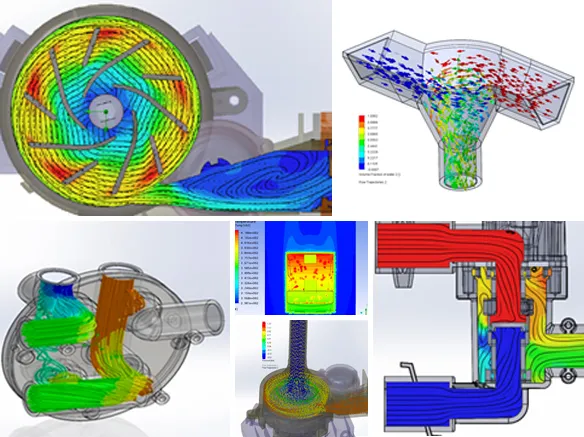
Computational Fluid Dynamics (CFD); With the advancing technology, simulation studies have gained importance especially recently. However, companies have begun to pay more attention to the use of such software and applications when hiring.
So what exactly is computational fluid dynamics? CFD, whose history dates back to the 1930s, is a new field that includes not only mathematics but also computer science and fluid mechanics.
Fluid mechanics studies the stationary and moving states of fluids. As it is known, behind these situations, there are mathematical equations that determine the motion characteristics of the flow. Computer programs or software packages are used by using high-level programming languages to solve mathematical equations. The definition of the “computational” section is briefly that fluid studies are performed on high-speed computers with numerical simulations containing programs or software packages.
Computational Fluid Dynamics Advantages
It has many advantages when we consider computational fluid dynamics.
Its low cost is an advantage. Since experiments and tests will be costly, it is much more convenient to perform the analyzes with CFD. For example, in aircraft design, 1 hour of CFD costs $1.000, 1 hour wind tunnel costs $10.000, and 1 hour flight test costs $100.000.
CFD is fast. While it may take days to plan and perform the tests, CFD enables us to find solutions in a much shorter time.
There is the possibility to simulate real and ideal conditions. Many flow and heat transfer mechanisms may not be easily tested. Let’s take hypersonic flow as an example. However, CFD gives us numerical results no matter what physical condition we are in.
Provides comprehensive information. While we can usually take measurements from certain regions and obtain results in experiments, CFD provides much wider possibilities in this regard, allowing us to get to the result faster.
You can get detailed information from our company Fanturk for computational fluid dynamics. Fanturk works with professional teams for you.
Uses of Computational Fluid Dynamics
- Research, Education and Design Tool
- Aviation and Space
- Automotive engineering
- Biomedical Science and Engineering
- Chemical and Mineral Processing
- Civil and Environmental Engineering
- Metallurgy
- Power Generation and Renewable Energy
- Sport
Computational Fluid Dynamics CFD
Thanks to CFD studies, some extra costs that may occur during pre-construction and use of the building can be avoided with the analysis contributions made to the projects during the design phase. Under the title of CFD studies, it offers effective solutions with 6 different analysis methods;
• Wind Load Calculations
• Fire and Smoke Simulations
• Pedestrian Level Comfort Analysis
• Special Ventilation Applications
• Thermal Comfort and Ventilation
• Parking Exhaust Simulations
Wind Load Calculations
Knowing the pressure distribution that will occur on the facade of the building is important for natural ventilation studies and to see the wind load that will occur on the building facades. In order to determine the pressure distribution and flow conditions caused by the wind, factors such as the building environment and building geometry should be examined in detail.
Fire and Smoke Simulations
CFD analysis is an effective study in visual and numerical simulation of a possible fire or smoke spread in car parks, evaluating the results and determining the best escape strategy. With CFD analysis studies, the performance of the ventilation system of the buildings can be measured in the event of a fire.
Pedestrian Level Comfort Analysis
Pedestrian level comfort analyzes in buildings can be evaluated with CFD simulations, taking into account climatic characteristics such as wind direction, direction and speed, and environmental factors.
Data Center, Operating Room Ventilation Applications
Thermal management of data processing centers, operating rooms and server rooms is important for healthy functioning. Errors that may occur can be minimized by comparing the values obtained as a result of the simultaneous temperature and flow measurements of the operating conditions of the equipment in the data centers with CFD analyzes and the standard values. With the simulations made, the reasons for the hot areas outside the limits on the thermal map are examined and improvements are made at the planning stage.
Thermal Comfort and Natural Ventilation
By determining the temperature and relative humidity conditions with CFD studies, optimum design opportunity is offered depending on the direction of the flow. Without requiring any mechanical ventilation, indoor spaces can be naturally ventilated and ventilation comfort can be increased. Thanks to Thermal Comfort Analysis, the effect of heat gain factors on the building facade can be clearly seen. The heating and cooling efficiency of the selected ventilation system can be demonstrated with numerical data.
Parking Exhaust Simulations
Exhaust gases generated in closed areas and parking lots must be disposed of appropriately, taking into account the comfort and health of the user. It is important for safety and healthy indoor air quality that the jet fan parking ventilation system in indoor parking lots works flawlessly in case of fire or during daily ventilation.
